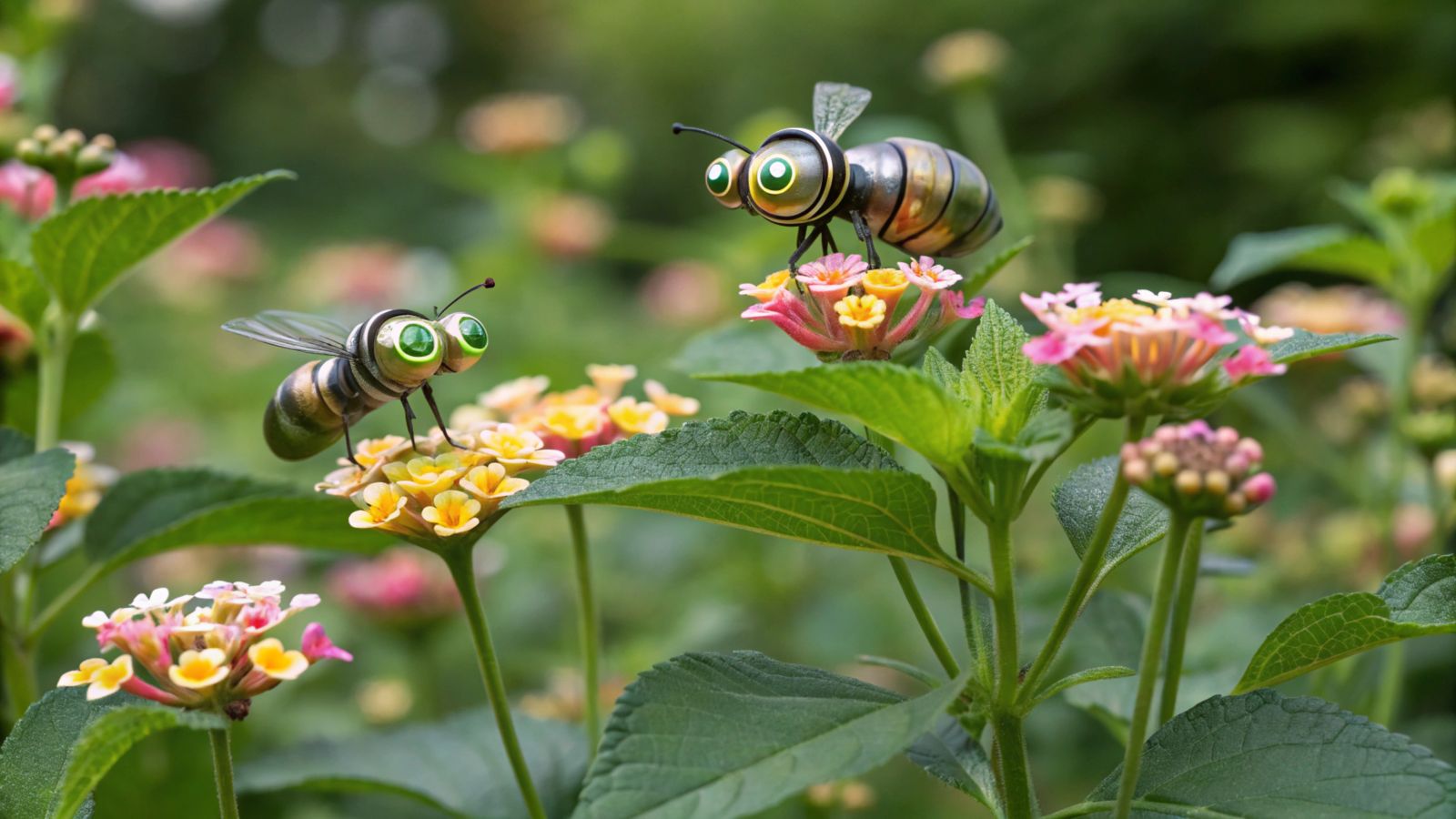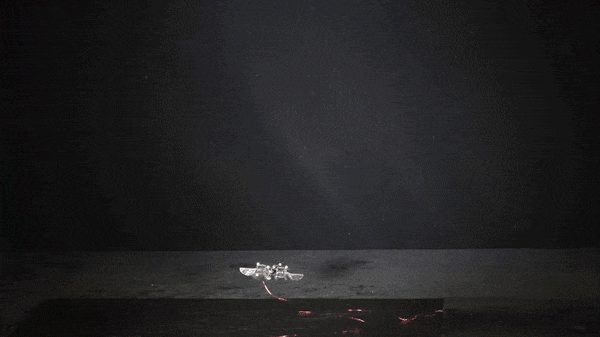Follow us on Google News (click on ☆)
These insect robots, lighter than a paperclip, are designed to mimic the fast and agile movements of natural pollinators. Their goal? To compensate for the decline of bees and offer a sustainable solution to increase agricultural yields while reducing environmental impact.

A record-breaking flight performance
The new robots can hover for more than 1,000 seconds, or nearly 17 minutes, a duration 100 times longer than previous versions. They also reach a speed of 35 cm/s (13.8 in/s) and are capable of performing complex acrobatic maneuvers, such as double flips.
These feats are made possible by an optimized design that reduces interference between the wings and improves stability. The researchers have also integrated artificial muscles made of elastomer and carbon nanotubes, enabling rapid and precise movements.
Inspiration from nature
The design of these robots is directly inspired by the anatomy of bees. Unlike older models with eight wings, the new robots have only four, which improves their efficiency. Each wing is powered by an artificial muscle, reducing mechanical fatigue and increasing the lifespan of the components.
The researchers have also developed longer and more durable wing hinges, manufactured using an ultra-precise laser cutting process. These innovations allow the robots to fly longer and more stably.

The insect robot in flight.
MIT video.
Towards more sustainable agriculture
In the future, these robots could be equipped with sensors and batteries, allowing them to operate autonomously outdoors. They could thus pollinate crops in controlled environments, such as vertical farms, reducing dependence on pesticides and natural pollinators.
Although these robots do not yet surpass bees in terms of precision and endurance, they represent a major advance in the field of bio-inspired robotics. Their development paves the way for more resilient and environmentally friendly agriculture.
To go further: What is robotic pollination?
Robotic pollination is an emerging technology aimed at replacing or supplementing natural pollinators, such as bees, with robots. These devices, often inspired by insects, are designed to carry pollen from one flower to another, ensuring plant reproduction.
Pollinator robots are equipped with sensors and navigation systems to identify flowers and perform precise pollen transfers. They are particularly useful in controlled environments, such as greenhouses or vertical farms, where natural pollinators are less effective.
These robots could play an important role in the face of the decline of bees, caused by pesticides, diseases, and climate change. By automating pollination, they could increase agricultural yields while reducing dependence on chemicals.
However, robotic pollination is still under development. Technical limitations, such as energy autonomy and movement precision, still need to be overcome for these robots to become a viable solution on a large scale.
What is biomimicry in robotics?
Biomimicry in robotics involves drawing inspiration from the structures, behaviors, or mechanisms of the living world to design more efficient robots. This approach allows for the replication of solutions proven by millions of years of evolution, such as insect locomotion or fish swimming.
The MIT insect robots are a striking example. Their design is directly inspired by bees, particularly for their wings and their ability to fly with agility. By mimicking nature, researchers are able to create machines that are lighter, faster, and better suited to complex tasks.
Biomimicry is not limited to physical form. It also includes the materials used, such as elastomer artificial muscles, which mimic biological tissues. This approach paves the way for more durable robots capable of adapting to various environments.
Finally, biomimicry allows for pushing the boundaries of robotics by exploring innovative solutions, such as robotic pollination, while respecting the principles of sustainability and energy efficiency.